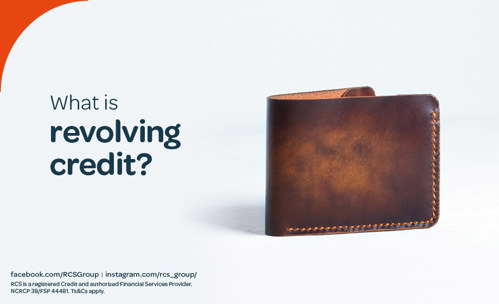What is revolving credit?
10 AUGUST 2023
You have most likely heard the term “revolving credit”, but have you stopped to ask what exactly “revolving” means? Read on to learn more about this type of credit and how it works. There are various forms of credit, depending on the reason you might need to use it or what will suit your financial situation. Revolving credit functions like a revolving door, meaning it never closes and is always open for you to access. It does not have a fixed number of payments that you are required to pay back and differs from instalment credit in this way. Instalment credit allows you to borrow a set amount of money over a period of time and repay it in fixed instalments.
There are various forms of credit, depending on the reason you might need to use it or what will suit your financial situation. Revolving credit functions like a revolving door, meaning it never closes and is always open for you to access. It does not have a fixed number of payments that you are required to pay back and differs from instalment credit in this way. Instalment credit allows you to borrow a set amount of money over a period of time and repay it in fixed instalments.
How does revolving credit work?
Revolving credit or revolving accounts function by giving you the choice to withdraw funds multiple times until you reach a set limit (or your credit limit). You decide how much money you borrow and how much your repayments will be, beyond the minimum payment requirements. Choose between either paying off the full balance on the credit or carry it over from month to month, i.e. revolving the balance. When you chose to revolve the balance, you need to pay a minimum payment which is dependent on your credit agreement.
There are also some basic fees that are charged by financial institutions when taking out a revolving account; a commitment fee, interest expenses and carry-forward fees on consumer accounts. In order to apply for a line of revolving credit, lenders will take into account the same factors as a loan application, namely your credit score, income and employment status.
Examples of revolving credit
The most popular forms of revolving credit that we use are credit cards, that are used for larger expenses, and retail store cards for smaller expenses. Revolving lines of credit is another example that is similar to credit cards, except they do not involve a physical card and take the form of a check issued by a lender. Lines of credit do not require a purchase to be made like credit cards; the funds can be directly transferred into your account. They have a lower rate of interest and can be used to fund major expenses such as home remodelling.
The pros and cons of revolving credit
Is revolving credit good or bad? Depending on how you use and why you need it, revolving credit can be beneficial or result in an unwanted outcome.
Pros:
- Revolving credit accounts can be useful for financial emergencies as you do not need to re-apply every time you utilize the credit.
- They give you the freedom to borrow easily when you need funds as a short-term and small loan.
- It can help you start building out a good credit history by using it for small purchases and paying out your balance on time.
- There are often better fraud protections with revolving credit than cash or debit cards.
Cons:
- If you’re unable to pay your credit balance in full each month, aim to keep the balance below 30% of your available credit to avoid hurting your credit score. Work out this credit utilization ratio by dividing your total credit card balances by the total of your credit limits.
- Revolving credit or accounts can often have higher interest rates than non-revolving credit when carrying over a balance.
- Applying for revolving credit requires lenders to conduct a hard inquiry on your credit history. This can cause your credit score to drop, although only lasts for a few months. Avoid applying for multiple revolving credit accounts at a time.
- Closing your account, whether due to mismanagement or dormancy, can impact your credit utilization ratio. It is better to keep the account open to help your credit score.
Difference between revolving and non-revolving credit
Non-revolving credit is loans that can’t be used again once they have been paid off, for example, student and auto loans. A revolving credit account allows you to draw or spend from your credit under your credit limit even if you have paid your balance. For this reason, non-revolving credit is used for larger loans and are more structured.
When considering taking out revolving credit, be sure to read the finer details in the agreement with your lender and discuss what you may not understand. Staying on top of your minimum payments and keeping your credit utilization ratio below 30% are the most important things to remember with this type of credit. Ensuring this will help you make the most of revolving credit in your financial tool belt.



